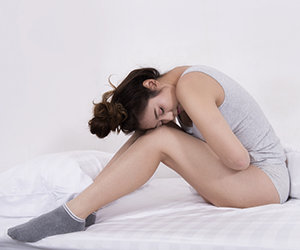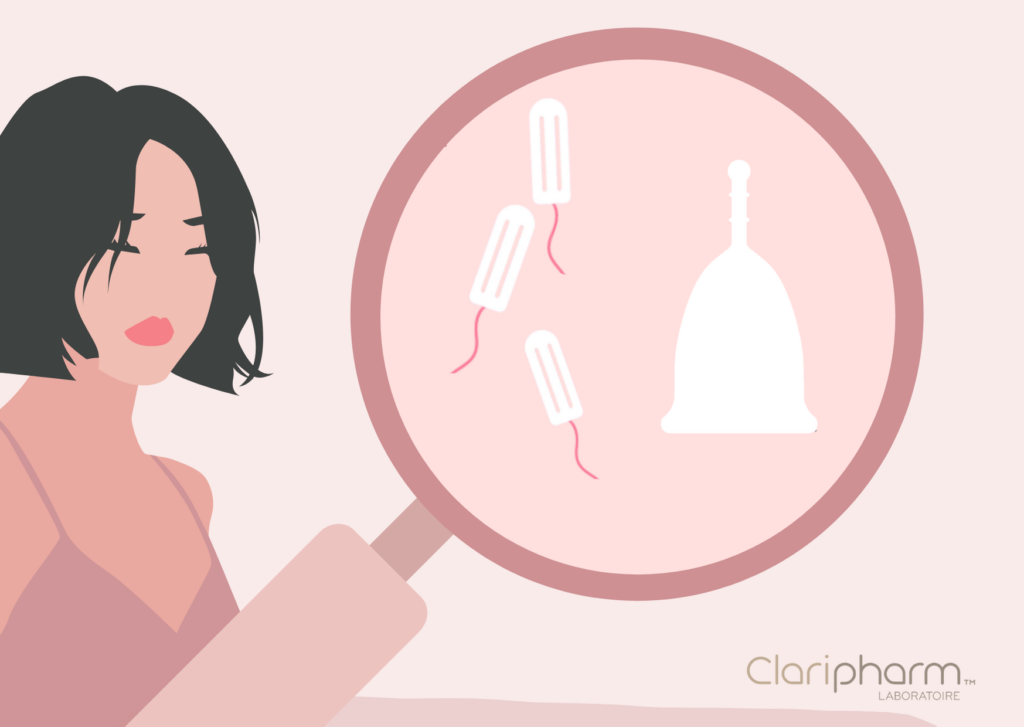Endometriosisis a chronic disease that affects nearly 10% of women in France. We discuss this in more detail in this article (click here).
The symptoms of the disease are numerous, but above all, contrary to what one might think, their intensity is not indicative of the seriousness of the lesions. Indeed, superficial endometriosis can be very painful and deep endometriosis sometimes goes unnoticed.
Summary of article :
Endometriosis, a disease that is still too poorly diagnosed
Endometriosisaffects nearly 10% of women in France according to social security figures. This gynaecological and chronic disease can be extremely disabling. To date, there are different therapeutic solutions available depending on the stage of the disease, hence the importance of making a rapid diagnosis.
What is endometriosis ?
In endometriosis, you may hear the term “endometrium”. The endometrium is the tissue that covers the inner lining of the uterus and thickens at the beginning of each menstrual cycle. The endometrium is evacuated each month through the vagina when no embryo is implanted: this is the menstrual period. (See the article The First Periods)
In almost all women, we can observe what is known as retrograde menstruation: instead of flowing through the vagina, the menstrual period goes up through the fallopian tubes and into the abdominal cavity. For 90% of women, it is eliminated each month without any problem. In the remaining 10%, the endometrium remains fixed, without knowing why. This is endometriosis.
This uterine tissue can attach itself to the ovaries, but also to the fallopian tubes, to the ligaments that support the uterus, the rectum, the vagina…or, more rarely, in the intestine, the colon or the bladder.
Every month, at the time of menstruation, it acts exactly like the uterine endometrium: it bleeds, causing an inflammatory reaction on the affected organs and leaving scars with each menstrual cycle.
Several hypotheses (genetics, heredity, environment…) have been put forward to explain the causes of endometriosis, but today we still do not know exactly why some women suffer from it and not others.
What are the symptoms?
There are endometrioses without any particular symptoms, but in most cases endometriosis is detected as a result of dysmenorrhoea, the very strong pain in the pelvis that accompanies menstruation, the intensity of which can even become incapacitating for the woman suffering from it.
As endometriosis can affect different organs, the symptoms can also be very different.
The main ones, apart from dysmenorrhoea, are :
- pain during sexual intercourse
- urinary disorders
- chronic fatigue
- difficulty in intestinal transit (constipation or diarrhoea)
It should be noted that these symptoms can appear independently of each other.
Finally, one last symptom, otherwise painful: infertility. For women affected on the ovaries and fallopian tubes, there is indeed a risk to fertility. In fact, women sometimes discover that they have endometriosis when they come to see us because they find it difficult to get pregnant.

When is it necessary to consult? How is a diagnosis made?
Even today, it still takes an average of 7 years on average to diagnose the disease, which is a lot…
Do not hesitate to consult a general practitioner or a gynaecologist if you have any of the symptoms mentioned above, especially violent pain during menstruation or during sexual intercourse.
The latter will then prescribe several examinations (ultrasound, MRI, hysterography…) in order to make a diagnosis. The reference examination remains laparoscopy (this is a surgical examination) which allows lesions to be identified and tissue samples to be taken for analysis.
What are the existing solutions?
It is not possible to “cure” endometriosis, but with good management it is now possible to fight the pain and slow down the evolution of the disease.
Hormonal or surgical treatment may be considered, following the advice of a health professional.
Endometriosis is a disease that can be very difficult to live with, either physically or psychologically. Many associations exist, offering advice, listening and support. Don’t hesitate to contact them.
Source : EndoFrance
Symptoms of endometriosis
There are endometrioses without any particular symptoms, but in most cases endometriosis is detected as a result of dysmenorrhoea, the very strong pain in the pelvis that accompanies menstruation, the intensity of which can even become incapacitating for the woman suffering from it.
As endometriosis can affect different organs, the symptoms can also be very different.
Pain
In most cases, endometriosis is detected as a result of dysmenorrhoea, a very strong pain in the lower abdomen but also in the lower back during menstruation. In most cases, endometriosis is detected as a result of dysmenorrhoea, a very strong pain in the lower abdomen but also in the lower back during menstruation.
Painful periods that prevent you from living your day normally, or that resist taking an analgesic may be symptoms of endometriosis. If the pain becomes disabling, talk to your health care professional.
Abnormal bleeding
Endometriosis also causes heavier and longer periods with periods that can last more than 7 days. As a reminder, on average menstruation lasts between two and seven days, but this is just an average, each one of us is different.
The presence of blood clots over time can also be a symptom.
Infertility
Infertility is often associated with the disease, but not all women with endometriosis are affected, 30 to 40% face infertility.
Digestive disorders
Digestive disorders associated with endometriosis include :
- Alternating diarrhoea/constipation at the time of menstruation
- Pain when going to the toilet
- The presence of blood in the stool
- Abdominal bloating, stool and gas stops.
This is known as digestive endometriosis. This is when endometriosis develops in the intestines, colon and rectum.
Urinary disorders
Women often talk about symptoms reminiscent of a urinary tract infection such as difficulty emptying the bladder, a frequent urge to urinate or sometimes the presence of blood in the urine.
Bladder endometriosis occurs when endometriosis develops in the bladder.
Chronic fatigue
Fatigue, irritability or depression, usually due to the fact that the pain is chronic.
Dyspareunie
These are deep pains during sexual intercourse. There are two types of dyspareunia in women:
- superficial dyspareunia, when pain occurs near or at the opening of the vagina
- deep dyspareunia, in case of pelvic pain, i.e. pain felt in the pelvic area, including the lower abdomen and genital area.
Deep dyspareunia can be a symptom of endometriosis.
Severe pain during menstruation or infertility often underlie the symptoms that lead to a visit to the doctor or gynaecologist and which are followed by a diagnosis of endometriosis or not.
If you have the slightest doubt, do not hesitate to contact your GP, your gynaecologist or the EndoFranceassociation, representatives are available in your regions.
Do you have further questions about the daily use of your menstrual cup? Write on social networks or by email to: contact@claripharm.fr




















